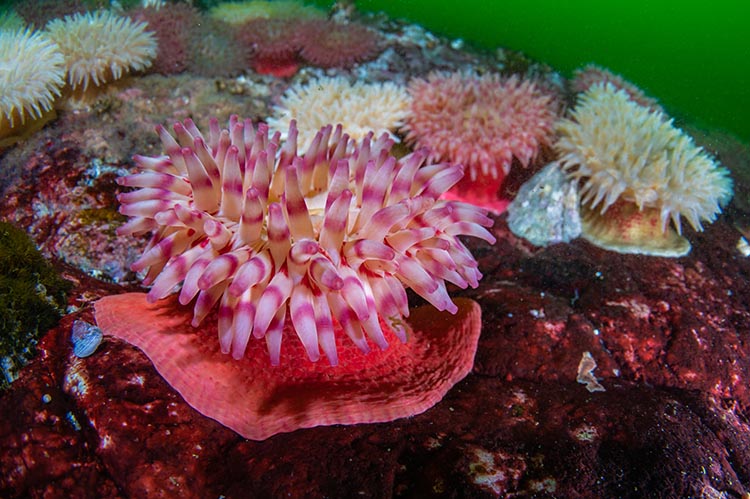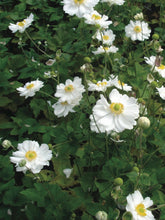The Enthralling Anemone: A Deep Dive into the Windflower
:max_bytes(150000):strip_icc()/growing-anemone-flowers-1316064_01_Anemonehupehensis-a128904a6c3c4a4e99a10d06268495a5.jpg)
Anemones, belonging to the genus Anemone within the Ranunculaceae (buttercup) family, are a captivating group of flowering plants renowned for their vibrant colors, delicate beauty, and intriguing life cycles. From the sun-drenched meadows of Europe to the alpine slopes of Asia and the woodlands of North America, anemones have graced diverse landscapes, captivating gardeners and naturalists alike for centuries. This article delves into the fascinating world of anemones, exploring their botany, cultivation, history, and the cultural significance they hold.
Botany and Morphology:
The name "anemone" derives from the Greek word "anemos," meaning "wind," often translated as "windflower." Several theories explain this name. One suggests the flowers open with the wind, while another posits that the seeds are dispersed by the wind.
Anemones are herbaceous perennials, meaning they die back to the ground each year and re-emerge from underground storage organs. These organs can be rhizomes (horizontal underground stems), tubers (swollen underground stems), or thickened roots, depending on the species.
The morphology of anemones is quite diverse, with variations in size, shape, and color across the numerous species. However, some general characteristics are common:
Leaves: Anemone leaves are typically basal, meaning they arise from the base of the plant. They are often deeply divided or lobed, giving them a fern-like appearance. Stem leaves, if present, are usually smaller and less divided.

Flowers: The flowers are the defining feature of anemones. They are typically solitary or borne in small clusters atop slender stems. The "petals" are actually tepals, a term used when the sepals and petals are indistinguishable. These tepals can range in color from pure white to vibrant shades of red, pink, purple, blue, and even yellow. The flower’s center is often adorned with a prominent cluster of stamens and pistils.
Fruits: After flowering, anemones produce achenes, small, dry, one-seeded fruits. These achenes are often adorned with a feathery appendage, aiding in wind dispersal.

Classification and Species:
The genus Anemone is vast, encompassing over 120 species. These species are often grouped based on their growth habits and flowering times. Some of the most popular and well-known groups include:

Spring-Flowering Anemones: This group includes species like Anemone blanda (Grecian windflower), Anemone apennina (Apennine anemone), and Anemone nemorosa (Wood anemone). These anemones emerge in early spring, carpeting woodlands and meadows with their delicate blooms. They typically grow from rhizomes or tubers.
Summer-Flowering Anemones: Anemone coronaria (Poppy anemone) and Anemone pavonina are prominent examples of summer-flowering anemones. These species are known for their vibrant, poppy-like flowers and are often grown from tubers.
Autumn-Flowering Anemones: This group includes species like Anemone hupehensis (Chinese anemone), Anemone tomentosa (Grapeleaf anemone), and Anemone x hybrida (Japanese anemone). These anemones provide a late-season burst of color in the garden, blooming in shades of pink, white, and purple. They typically spread by rhizomes.
Cultivation and Care:
Anemones are relatively easy to grow, but understanding their specific needs is crucial for successful cultivation. Here are some key considerations:
Light: The light requirements vary depending on the species. Spring-flowering anemones generally prefer partial shade, mimicking their natural woodland habitat. Summer-flowering anemones thrive in full sun, while autumn-flowering anemones can tolerate partial shade.
Soil: Well-drained soil is essential for all anemones. They prefer soil that is rich in organic matter and slightly acidic to neutral in pH. Heavy clay soils should be amended with compost or other organic materials to improve drainage.
Watering: Anemones need consistent moisture during their growing season. However, overwatering can lead to root rot, especially in heavy soils. Allow the soil surface to dry slightly between waterings. During dormancy, reduce watering significantly.
Fertilizing: A light application of balanced fertilizer in early spring can promote healthy growth and abundant flowering. Avoid over-fertilizing, as this can lead to excessive foliage growth at the expense of flowers.
Propagation: Anemones can be propagated by seed, division, or by separating offsets from the parent plant. Seed propagation can be slow and variable, while division and offsets are quicker and more reliable methods.
Pests and Diseases: Anemones are generally resistant to pests and diseases. However, they can be susceptible to slugs, snails, and aphids. Root rot can also be a problem in poorly drained soils.
History and Cultural Significance:
Anemones have a rich history and have been associated with various myths, legends, and cultural traditions throughout the world.
Greek Mythology: In Greek mythology, the anemone is said to have sprung from the tears of Aphrodite as she mourned the death of her beloved Adonis. This association with grief and loss is reflected in some of the flower’s symbolic meanings.
Christian Symbolism: In Christian symbolism, the red anemone represents the blood of Christ and is often associated with the crucifixion.
Victorian Flower Language: During the Victorian era, the language of flowers was a popular means of communication. Anemones were often used to convey feelings of forsaken love or fading hope.
Modern Symbolism: Today, anemones are often associated with anticipation, excitement, and a sense of fragility and fleeting beauty. They are frequently used in floral arrangements to add a touch of elegance and charm.
Uses in Landscaping and Floral Design:
Anemones are versatile plants that can be used in a variety of landscaping applications. Spring-flowering anemones are ideal for naturalizing in woodlands or rock gardens. Summer-flowering anemones add a splash of color to borders and containers. Autumn-flowering anemones provide a late-season display in perennial gardens.
Anemones are also popular cut flowers, prized for their vibrant colors and long vase life. They are frequently used in bouquets, centerpieces, and other floral arrangements.
Conclusion:
From their delicate beauty to their rich history and cultural significance, anemones are truly captivating plants. Whether you are a seasoned gardener or simply appreciate the beauty of nature, anemones offer a rewarding experience. By understanding their specific needs and appreciating their unique characteristics, you can enjoy the enchanting beauty of these windflowers in your own garden or floral arrangements. They bring a touch of magic and elegance to any setting, reminding us of the fleeting beauty of nature and the power of symbolism.
Frequently Asked Questions (FAQ):
Q: Are anemones poisonous?
A: Yes, anemones contain protoanemonin, a toxic compound that can cause skin irritation and gastrointestinal upset if ingested. It is important to handle anemones with care and keep them out of reach of children and pets.
Q: When is the best time to plant anemones?
A: The best time to plant anemones depends on the species. Spring-flowering anemones are best planted in the fall, while summer-flowering anemones are best planted in the spring. Autumn-flowering anemones can be planted in either spring or fall.
Q: How deep should I plant anemone bulbs or tubers?
A: Plant anemone bulbs or tubers about 2-3 inches deep, with the pointed end facing up. Soak the tubers in water for a few hours before planting to rehydrate them.
Q: How do I overwinter anemones in cold climates?
A: In cold climates, some anemone species may need protection during the winter. Mulch around the plants with a layer of straw or leaves to insulate the roots. Alternatively, you can dig up the tubers or rhizomes in the fall and store them in a cool, dry place until spring.
Q: Why are my anemones not flowering?
A: There are several reasons why anemones may not flower. These include:
- Insufficient sunlight: Anemones need adequate sunlight to flower.
- Poor drainage: Overwatering or poorly drained soil can lead to root rot, which can inhibit flowering.
- Lack of nutrients: Anemones need adequate nutrients to flower.
- Improper planting depth: Planting the bulbs or tubers too deep or too shallow can also affect flowering.
- Dormancy: Some anemone species have a dormancy period and may not flower every year.
Q: How do I control slugs and snails on my anemones?
A: Slugs and snails can be controlled using a variety of methods, including:
- Handpicking: Pick off slugs and snails by hand, especially at night or after rain.
- Slug bait: Use slug bait containing iron phosphate, which is less toxic to pets and wildlife.
- Copper barriers: Place copper strips around the plants to deter slugs and snails.
- Diatomaceous earth: Sprinkle diatomaceous earth around the plants to create a barrier that slugs and snails cannot cross.
Q: Can I grow anemones in containers?
A: Yes, anemones can be grown in containers. Choose a container that is at least 6 inches deep and wide and use a well-draining potting mix.
Conclusion:
The anemone, with its delicate beauty and vibrant colors, is a testament to the enchanting power of nature. Its diverse species offer a wide range of options for gardeners and floral designers alike. Understanding its botanical characteristics, cultivation needs, and historical significance allows us to fully appreciate the magic of this "windflower." By incorporating anemones into our gardens and floral arrangements, we bring a touch of elegance, symbolism, and fleeting beauty into our lives. Whether you’re drawn to the early spring blooms of the woodland anemones or the late-season color of the Japanese anemones, the anemone offers a captivating and rewarding experience for all who encounter its charm.

:max_bytes(150000):strip_icc()/growing-anemone-flowers-1316064_11-86fff7f814dc4c5abc65d3e06939d1a1.jpg)
